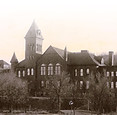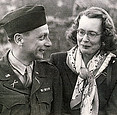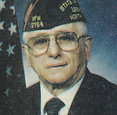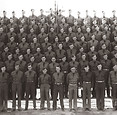
WWII Heritage City

North Dakota’s Designated WWII Heritage City

Valley City holds a unique honor as North Dakota’s only designated WWII Heritage City, a distinction awarded to just one community in each state by the U.S. Department of Defense. This recognition highlights the city’s important role during World War II and its continued dedication to preserving and sharing those stories.
Throughout Valley City, you’ll find interpretive panels and historic markers that bring this era to life. These share the stories of local men and women who served, the Hi-Line Bridge being guarded to protect critical transportation routes, the efforts of nurses and community members on the home front, and the lasting impact the war had on Valley City.

Women in War

"
"
It’s been an experience recalling what happened back in 1945-1948. Many can’t be recorded on paper. The nuns were very strict with us and each nurse could write their own book about patients, etc ... I wanted to become a nurse since a teenager, and then the government offered the Cadet Corps to help ease the shortage of nurses during World War II. I applied and was accepted and, after graduating from High School on a Friday, I packed up and moved to the nurses’ dorm and school began the following Monday. The government program furnished our white work uniforms and a military-style dress uniform, tuition, books, and a monthly allowance. Part of our training was in Minneapolis and Devils Lake. Earning our Caps was a ceremony and we were happy to wear it. Rules were hair could not touch our shoulders, no perfume, uniform skirt length was to be mid-calf, scissors and pen in our pocket at all times.


- Excerpt from a letter sent by Ethelyn (Smedshammer) Paulson, Class of 1948



The Call Went Out for Help and Women Answered
When World War II began, it became clear that the U.S. military needed more personnel than the number of available men. To fill critical non-combat roles and free men for battle, Congress created women’s military units starting in 1942. These included the WAACs—later the fully recognized WACs—along with the Navy’s WAVES, the Coast Guard’s SPARs, and the Army Air Force’s WAFS/WASPs. Women also served in the Army and Navy Nurse Corps.
Some of the first U.S. servicewomen to experience combat became prisoners of war after the fall of Corregidor in 1942, including several nurses from this region. All 77 captured nurses survived and were liberated in 1945.
By the end of the war, leaders such as Dwight D. Eisenhower openly recognized women’s vital contributions, acknowledging the early mistake of doubting their abilities. Their service—both overseas and at home—proved essential to Allied success. In 1948, Congress passed the Women’s Armed Services Integration Act, making women a permanent part of the U.S. military.




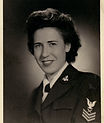.jpg)

.jpg)


Shown are just a few of many, many local women who signed up to go to war.
Local Women Join the Workforce
During World War II, women across the United States stepped in to fill roles left vacant by men who went to fight. In Valley City and surrounding areas, women worked in factories, shipyards, and munitions plants, embodying the spirit of “Rosie the Riveter” and “Swing Shift Sally.” They also contributed on the home front through rationing, war bond sales, scrap collection, and other community efforts, maintaining households and supporting the war effort.
Local examples include:
-
Female gas attendants: Sisters Ann and Matilda Mikkelson and Myrtle Wolfley of Oriska ran service stations, keeping cars fueled and running while male relatives served.
-
Industry and manufacturing: Mabel and Bernice Huseby moved to Chicago to work for Bendix Aviation and later enlisted in the Navy WAVES program. Rhoda Grasswick Pomplun worked as a shipyard welder, earning a national award for her skills.
-
Government work: Lorraine Osen, Olivia Kjelland, and Doris Lee Bashore took government positions in bookkeeping, cryptography, and welding research, contributing to critical wartime operations.
These women challenged traditional roles, often facing prejudice, and demonstrated determination and ingenuity. Their efforts on both the home front and in industry were essential to supporting the troops and ensuring America’s victory.

.jpg)



The A Bomb



The A Bomb
Dr. Clifford John Klein, raised in Eckelson, ND, studied medicine and chemistry at Jamestown College before briefly working for Du Pont. He was then recruited—essentially “kidnapped”—by the U.S. Army to work on the top-secret Manhattan Project, first at the University of Chicago and later in Oak Ridge, Tennessee, where he met and married Elizabeth O’Hara, a War Department stenographer. Klein contributed to plutonium research critical to developing the atomic bomb, which was successfully tested in New Mexico in 1944 and later used in Hiroshima and Nagasaki, helping bring World War II to a close. After the war, Cliff and Elizabeth returned to Valley City to raise their family. Elizabeth passed away in 1973, and Cliff in 2007; both are buried in St. Catherine’s Cemetery in Valley City.

Valley City State University
From VCSU to Service

During World War II, Valley City State Teachers College (now VCSU) became an active training site for both men and women serving in the war effort. A major contribution was hosting the U.S. Navy V-12 Program, a national officer training initiative. Beginning in 1943, 233 recruits arrived on campus, and over the next two years, 532 men from across the country completed training there. Designed to prepare future deck officers, the program taught subjects like Seamanship and Damage Control before recruits transferred to Midshipman School or advanced training.


The college also supported the war by educating Mercy Hospital Cadet Nurses in science courses and training women as Naval Civilian stenographers, many of whom were sent to Washington, D.C. to support Navy operations. In addition, the campus hosted Navy WAVES, Women’s Army Corps (WACS) trainees, Coast Guard SPARS, Red Cross workers, and future “Rosie the Riveters.” After the war, several women who had served returned to the college on the GI Bill, making it both a place of preparation and return.

Company G Infantry

VC Co. G storms Guadalcanal with Marines
Formed in 1884 as Company G, Dakota Militia, Valley City’s National Guard unit has served with distinction for more than a century. After action in the Spanish-American War, Mexican Border Campaign, and World War I, its greatest challenge came during World War II.
Mobilized in 1941, Company G joined the 164th Infantry Regiment and deployed to the South Pacific. In October 1942, they became the first U.S. Army unit to engage Japanese forces on Guadalcanal, fighting alongside Marines in the brutal Battle of Coffin Corner. The 164th earned the Navy Presidential Unit Citation for extraordinary bravery and went on to serve nearly 600 days in combat, suffering heavy losses but helping secure key Allied victories.


The unit continued its proud service in the Korean War (1950–1953) before being reorganized in 1955 as the 141st Engineer Combat Battalion, based in Valley City. In 2004, it served with honor in Operation Iraqi Freedom, where four members were killed in action. The battalion later became the 231st Brigade Support Battalion in 2008, carrying the legacy into the modern era.
In 2005, North Dakota honored the 164th Infantry by naming Highway 2 the 164th Infantry Highway. A sign now displayed at Valley City’s Veterans Memorial Park commemorates the regiment’s courage and sacrifice—from Guadalcanal to Iraq, a lasting testament to the dedication and heroism of North Dakota’s citizen-soldiers.

The 118th Battalion | Home Guard



The 188th/957th Field Artillery Battalions and Battery ‘D’ of Valley City take on Germany
The 188th Field Artillery Battalion, headquartered in Bismarck, ND, with Battery D in Valley City, was activated in April 1941 and trained at Fort Warren, WY, and later Fort Lewis, WA. Winter training on Yakima Ridge prepared them for harsh conditions in the Battle of the Bulge. The battalion split into the 188th and 957th, with many Valley Citians in the 957th.
After landing in France shortly after D-Day, the unit supported airborne operations, often fighting on the front lines, capturing 258 German soldiers at Mons, breaching the Siegfried Line, and participating in the siege of Aachen. The 957th faced the German counteroffensive in the Ardennes and witnessed the horrors of Nordhausen Concentration Camp.
The battalion fired its last rounds on April 23, 1945, earning five campaign stars (Normandy, Northern France, Rhineland, Ardennes, Central Europe), occupying 104 combat positions, taking 501 POWs, and suffering 24 KIA and 61 WIA. Battery D of Valley City is remembered through photos showing their camaraderie.
Valley City Volunteer Home Guard
The Valley City Volunteer Home Guard was the first unit formed in North Dakota after the U.S. entered World War II. With over 3,000 guardsmen away, forty local men volunteered to protect the Hi-Line railroad bridge over the Sheyenne River, the longest in the state and vital for transporting troops and supplies. Volunteers—including veterans, American Legion, VFW, city, and railroad personnel—brought their own weapons and winter gear, earning praise from the Northern Pacific Railroad for their efficiency. After Pearl Harbor, 74 men from Valley City quickly joined Company F of the ND Home Guard. The community supported the unit, raising funds for equipment through events like a benefit dance.
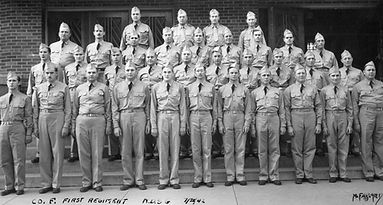
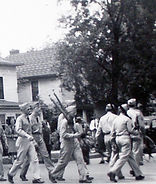

Ghost Army


Valley City’s Secret War Hero
Clifford “Dede” Simenson, born in 1909 in Valley City, ND, was the fourth of seven sons in a family known locally for their general store. Excelling in leadership and athletics at Valley City High, he went on to study at the University of North Dakota and then West Point, graduating in 1934. Rising quickly in the Army, Simenson became operations officer for the 23rd HQ Special Troops, famously known as “The Ghost Army.” This secret unit used inflatable tanks, sound effects, and radio deception to simulate larger forces, saving thousands of lives and aiding the liberation of Europe. Their work remained classified until the mid-1990s, and in 2022, the Ghost Army and its 1,100 soldiers were awarded the Congressional Gold Medal for their unique and distinguished service.

Herman Stern

Herman Stern: Businessman, Community and Civic Leader, and Holocaust Rescuer
Herman Stern, a Jewish immigrant and businessman from Valley City, North Dakota, became a remarkable humanitarian during the Holocaust. In 1933, after receiving a desperate letter from his niece Klara in Germany, Stern—working with Senator Gerald Nye and Governor William Langer—secured her visa to America. As Nazi persecution intensified, Stern began helping more relatives and friends escape, personally guaranteeing each visa applicant’s character, employment, and financial independence.
Using his business connections across North Dakota, Minnesota, Chicago, and New York, he organized sponsors and jobs for refugees. By 1938, Stern had helped relocate around 100 German Jews to safety. He later worked tirelessly to bring his remaining brothers—Adolf, Julius, and Moses—to America, but the bombing of Pearl Harbor in 1941 ended immigration efforts. Tragically, some of his family members were killed in concentration camps.
Though estimates vary, Stern is credited with saving between 125 and 200 Jewish lives. He humbly described his rescue work as a responsibility to help others enjoy the freedom and opportunity that America had given him, leaving behind a legacy of courage, compassion, and moral conviction.



Nuremberg



Local Women Serve at Nuremburg Trials
Harriet Zetterberg of Valley City studied law at the University of Wisconsin and Yale, becoming the first woman to earn a Sterling Fellowship. She worked as an attorney in Washington, D.C., and London before joining the prosecution team at the Nuremberg Trials, where she analyzed documents from Nazi official Hans Frank for evidence of war crimes. Though she could not present her findings in court due to her gender, her work was vital. She later married fellow lawyer Daniel Margolies and supported his career as a U.S. ambassador.
Annabel Grover, born in Leal, North Dakota, worked for the Navy and the Pentagon before serving at Bletchley Park in England, helping route decrypted Nazi messages. After the war, she became secretary to a chief prosecutor at the Nuremberg Trials and later worked for the CIA in Virginia, where she married WWII veteran Joseph Bell Stover.
Both women made significant contributions to postwar justice and intelligence efforts.


"
"
Held for the purpose of bringing Nazi war criminals to justice, the Nuremberg trials were a series of 13 trials carried out in Nuremberg, Germany, between 1945 and 1949. The defendants, who included Nazi Party officials and high-ranking military officers along with German industrialists, lawyers and doctors, were indicted on such charges as crimes against peace and crimes against humanity. Nazi leader Adolf Hitler (1889-1945) committed suicide and was never brought to trial. Although the legal justifications for the trials and their procedural innovations were controversial at the time, the Nuremberg trials are now regarded as a milestone toward the establishment of a permanent international court, and an important precedent for dealing with later instances of genocide and other crimes against humanity.


The Valley City Community

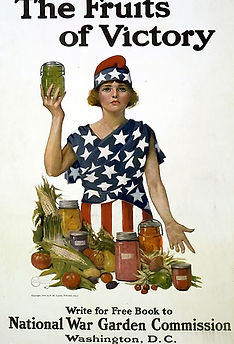
Valley City Keeps the Home Front Going
During World War II, Valley City and Barnes County rallied together to support the war effort despite the loss of many men to military service and defense industries. Women, children, and community volunteers filled labor gaps, maintaining farms and local production. Rationing programs limited food, fuel, and clothing, while residents organized scrap, paper, and metal drives to supply materials for weapons.
The community raised funds through war bond campaigns, successfully financing a “Barnes County Bomber” and three jeeps for the front lines. Victory Gardens flourished across backyards and parks, and Homemakers’ Clubs taught canning and sewing to stretch limited supplies.
Through hard work, sacrifice, and unity, Valley City proved itself a strong “Home Front,” embodying the spirit of patriotism and resilience that helped secure America’s World War II victory.

Farmers Feed War Efforts
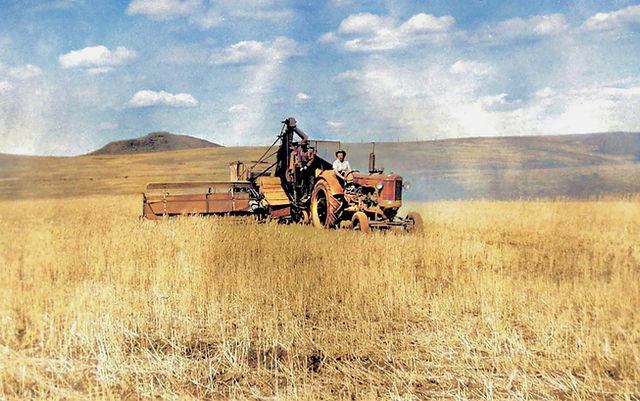

Agriculture's Role in WWII Victory
During World War II, agriculture played a crucial role in supporting the war effort by supplying food for troops and civilians. The Tydings Amendment of 1942 created a draft deferment program for farmers to address labor shortages and sustain production, forming what was called the “Agricultural Army” or “Soldiers of the Soil.” Despite these efforts, Barnes County still faced worker shortages as many men joined the military or defense industries. Local women, students, and white-collar workers volunteered to help, and in 1945, 5,000 Mexican laborers were brought in for the harvest.
Community members also contributed through Victory Gardens, canning, and preserving food, with schools and Girl Scouts joining in to prevent shortages. In 1944, the nation’s first “Wheat Queen,” Rose Busche, was crowned by soldiers stationed in Valley City to help with harvests. She later served as a civilian stenographer for the Navy, symbolizing the unity and dedication of all who worked to ensure America’s victory through food and service.



Local Talents
Peggy Lee Joins the USO Tours with Benny Goodman Orchestra
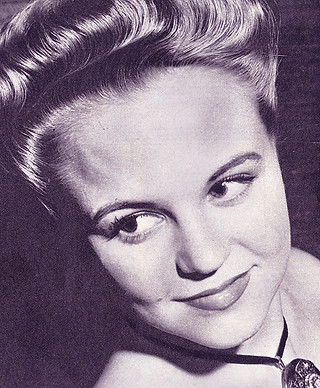
Originally from Wimbledon, Norma Deloris Egstrom - aka Peggy Lee - got her big break singing at KOVC in Valley City. This led to other singing jobs that eventually landed her with a gig as the star singer for Benny Goodman and his Orchestra from 1941 to 1943. It wasn’t long after that she was dubbed ‘Queen of the Airwaves.’
When WWII broke out, she and the Benny Goodman Band performed at various military camps and bases all over the United States as part of the USO tours. Her ensuing fame as a singer (coined by crooner Tony Bennett as ‘the female Frank Sinatra’), song writer, and actress didn’t stop her from flying out of Hollywood for a one-night guest performance in Jamestown for the first reunion of the North Dakota 164th Infantry following the war
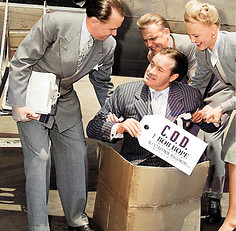


Valley City’s Clark Sisters Tour with the Tommy Dorsey Band
The Clark Sisters were the granddaughters of former Valley City resident and bandleader, D.W. Clark. Jean, Ann, and Peggy were born and raised in Valley City while Mary, the youngest, was born in Grand Forks. They joined the Tommy Dorsey Orchestra in early 1943; Dorsey renamed them “the Sentimentalists.” The quartet toured with the Dorsey Band as part of the USO Tours, performing at military bases and camps throughout the United States. After Jean’s marriage in 1948, the remaining members formed a trio and had intermittent success, even having their own ‘Bob Hope’ moment when they backed Hope on his “Buttons and Bows” song from the movie of the same name.

Businesses Rally Support



Businesses Showcase Patriotism
and Resiliency
During World War II, local businesses in Valley City adapted to shortages and rationing, conserving resources like rubber, leather, and silk while some secured war supply contracts, such as the Occident Mill. Small-town merchants also boosted community morale by participating in War Bond drives, parades, scrap collections, and harvest efforts, often competing with nearby towns. Their efforts—including winning statewide recognition in a war bond display contest—highlighted the resilience, patriotism, and adaptability of local businesses during a critical time in American history.
.jpg)

"
"
I need not repeat the figures. The facts speak for themselves … these men could not have been armed and equipped as they are had it not been for the miracle of production here at home. The production which has flowed from the country to all the battlefronts of the world has been due to the efforts of American business, American labor, and American farmers, working together as a patriotic team.
- President Franklin D. Roosevelt, Navy Day speech, October 27, 1944


The Sisters of Maryvale
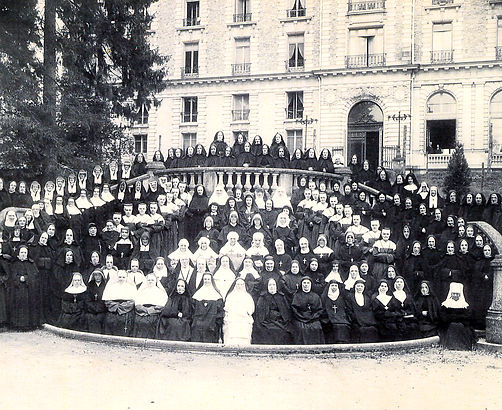.jpg)
.jpg)
Valley City Nuns Became Prisoners of the German Army
From 1942 to 1944, seven young Sisters of Mary of the Presentation from Valley City were held as prisoners by the German Army in Vittel, France, after attempts to return to the U.S. failed. They lived in confiscated hotels called “Camp Convent,” following a strict routine with Mass, classes, and Red Cross-supplied food, with minimal interference from their captors. In 1944, they were exchanged for German prisoners and returned to the U.S., arriving in good health despite two years of internment.
After the war, the Sisters expanded their missions in Europe, Africa, and the U.S., eventually founding SMP Health and building Maryvale near Valley City in 1965 as a regional house and retreat center. In 2022, they gifted Maryvale to a nonprofit under the Diocese of Fargo to ensure it continues as a retreat and spiritual center for the future.

Ties to Norway




Valley City's Ties to Norway
The 99th Infantry Battalion (Separate), activated in 1942 at Camp Ripley, Minnesota, was an elite U.S. Army unit made up of Norwegian-Americans who could speak Norwegian and ski. Originally intended for the liberation of Norway, the battalion saw combat in France, Belgium, and Germany before going to Norway in June 1945 to disarm German forces. Trained with the 10th Mountain Division, the 99th carried out specialized missions, earning distinction as a multinational unit within the U.S. Army.
Valley City sculptor Paul Fjelde created a Lincoln bust presented to Norway in 1914, which later inspired silent anti-Nazi protests at Oslo’s Frogner Park during WWII. Each July 4 from 1940–1945, Norwegians gathered around the statue in tribute, drawing on Lincoln’s Gettysburg words as inspiration. Fjelde’s original proof resides at Valley City State University, and he later became VCSU’s first Distinguished Alumnus.

Homeboy

Dedicated to All Those Who Served
Brownell “Brownie” Cole enlisted in the U.S. Army in 1940, expecting adventure and training in the Philippines. After Pearl Harbor, he was thrust into combat, captured by Japanese forces, and forced into the Bataan Death March in April 1942—an excruciating 60-mile march during which thousands of American and Filipino POWs died from starvation, dehydration, and brutality. Cole survived the march and endured three and a half more years in Japanese prison camps before being liberated in August 1945. Weighing only 95 pounds, he spent nearly a year recovering. Though not originally from Valley City, he later made it his permanent home and became a valued part of the community.
Cole’s experience represents only one story among many from local WWII servicemembers. Valley City and the surrounding area lost numerous men in the conflict, and their histories are preserved through the Barnes County Historical Society. Among the earliest casualties was George Winston Hammerud, a USS Arizona radioman killed at Pearl Harbor. Others included Vernon Jerome Eidsvig of Kathryn, who died aboard the USS Utah during the same attack; First Lt. Clarence Edward Van Ray, who survived the Bataan Death March but died aboard a Japanese “Hell Ship” in 1945; and Leslie Neumann of Litchville, a decorated Army Air Corps pilot lost in action in 1943. Another Valley City veteran, Rheinhold “Rhiney” Weber, survived six months as a POW in Germany and later became a prominent advocate for veterans’ causes.
Valley City honors these and many other local heroes at Veterans Memorial Park, dedicated in 2004, and through efforts to preserve their stories so future generations never forget their sacrifices.

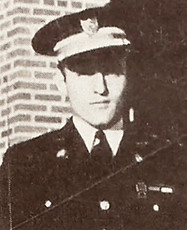




We Remember Our Local Veterans Who Gave Their All in World War II
• Louis A. Allard • Bill Baldwin • Benjamin Barnard • Bernard S. Bennison • Ervin D. Bergan • Willard Brandt • Merril C. Brimer • Melvin G. Busche • Orville E. Carman • William M. Carney • Orville M. Chilson • Guy A. Combs, Jr. • James Cunningham • Leland I. Cunningham • Erling N. Dahl • Freddie A. Dickhoff • James A. Diemert • Glen T. Elliott • Blair Flegal • Harold L. Frostad • David H. Gassmann • Donald J. Gibson • Milton L. Graalum • Warren C. Gray • George W. Hammerud • Woodrow W. Hamilton • Howard I. Hansen • Derald C. Holland • Leslie G. Hull • Leonard Hurley • Willard R. Johnson • Jordan E. Keister • Edwin Kienzle • Russell M. Kinzer • Leonard B. Kjelland • Ward H. Knable • Frank S. Koehn • Louis Larson • Lawrence J. Lavey • Earl H. Leland Robert C. Lindner • Wallace E. Loken • Henry A. Lovaas • Kenneth Maier • Wayne P. Maresh • Gordon L. Martilla • Henry J. McClaflin • Roland D. McKay • Floyd R. Miller • Martin J. Millner • Gerhardt P. Moen • Melvin Monson • Everett L. Murray • Harold Myrhow • David L. Mythaler • Arthur K. Nelson • Leslie Neuman • George A. Nielson • James Noonan • Kenneth R. Olson • Glenn Opdahl • Thomas Pegg • Leo J. Peyton • Lester R. Pfaff • Robert B. Pfusch • Harvey J. Phillips • Robert P. Ployhar • Mervin E. Radke • Russell Raykjalin • Quinten Robel • Clarence Rue • Kermit P. Rufsvold • Ervin E. Sherman • Eldred Stafney • George H. Stephenson • Palmer Swenson • Donald A. Syverson • Wilbert A. Teigen • Toivo T. Toumie • Clarence E. Van Ray • Paul Wallin • Eugene K. Wicks • Oral M. Winson • Clarence T. Workman • Stanley G. Workman • Lawrence A. Yanish • Orvel P. Zdeb

The Occident Mill

Valley City Mill Gets War Contract
During World War II, the Russell-Miller mill in Valley City received an important war contract to produce 3,300 tons of granalko grits, a grain-based product made from surplus wheat. Manager Henry Bjerke announced in August 1943 that the entire mill would shift operations to fulfill the order, which required 185,000 bushels of wheat purchased through government channels. The grits were shipped to eastern distilleries to be converted into alcohol used for synthetic rubber, high explosives, and even torpedo fuel—making the Valley City mill a key contributor to the wartime supply chain.
Historic photos show the mill’s interior and crews operating equipment that changed little over the years, reflecting what production looked like during the war. The Russell-Miller Milling Company was once a major employer and a recognizable landmark featured on local postcards.




The mill ultimately closed on April 2, 1963, ending 80 years of milling operations in Valley City. After the switch was turned off for the final time, around 10 employees were laid off, following earlier staff reductions. The F.H. Peavy Company—owner of the mill since 1953—shifted operations to plants in Minot and Grand Forks. Founded originally by Hiram Walker and later owned by John Russell and Arthur Miller, the mill began as a water-powered operation on the Sheyenne River, later converting to steam and eventually electricity. Despite rebuilding after fires in the early 1900s, the facility could not escape industry consolidation, marking the end of an era for the community.


.png)




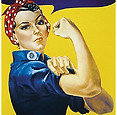

.jpg)



